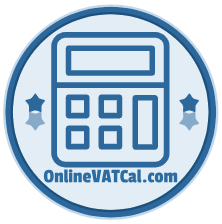The Flat Rate VAT Scheme
Guide to the Flat Rate VAT Scheme
The Flat Rate VAT Scheme is an important accounting method for small businesses to consider as part of their 2023 tax planning and preparation strategy. This guide covers everything you need to know about the Flat Rate Scheme, including how it works, benefits, disadvantages, and eligibility.
What is the Flat Rate VAT Scheme?
The Flat Rate Scheme is a simplified VAT accounting approach where small businesses pay VAT as a fixed percentage of turnover, rather than accounting for VAT on each transaction. The flat rate percentages vary based on business sector. Firms with annual taxable turnover under £150,000 are eligible.
How the Flat Rate Scheme Works
With the scheme, VAT due is calculated by applying the fixed flat rate percentage to your overall VAT-inclusive turnover. You don’t account for VAT paid on purchases separately except for certain capital assets over £2,000. This simplifies record keeping and calculations.
Key Benefits of the Flat Rate Scheme
The Flat Rate Scheme provides several advantages:
- Requires less time on VAT accounting with simplified calculations
- Smooths cash flow as VAT payments are predictable
- Reduces risk of VAT errors that lead to tax penalties
- Provides 1% discount on flat rate in first year after VAT registration
- No need to determine which purchases have recoverable VAT
Considerations Before Joining the Scheme
The scheme may not benefit all small businesses. Consider:
- If your business makes many zero-rated or exempt sales
- If you regularly receive VAT repayments under standard accounting
- If most purchases are standard rated so you lose input tax recovery
Eligibility for the Flat Rate Scheme
To qualify, your taxable turnover must be £150,000 or less excluding VAT. Certain businesses like accountants cannot use the scheme. You must also leave the scheme if turnover exceeds £230,000.
Getting Started on the Flat Rate Scheme
To join, inform HMRC in writing and apply the appropriate flat rate percentage from your next VAT period. You must follow VAT reporting rules and keep digital records. Leaving the scheme also requires informing HMRC.
For small businesses, evaluating if the simplicity of the Flat Rate Scheme outweighs the potential VAT recovery losses is an important element of tax planning and preparation.
Want to know more: https://www.gov.uk/vat-flat-rate-scheme
Popular questions
List of Questions asked by Users about the Flat Rate VAT.
